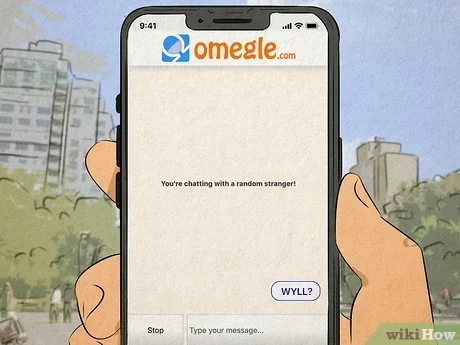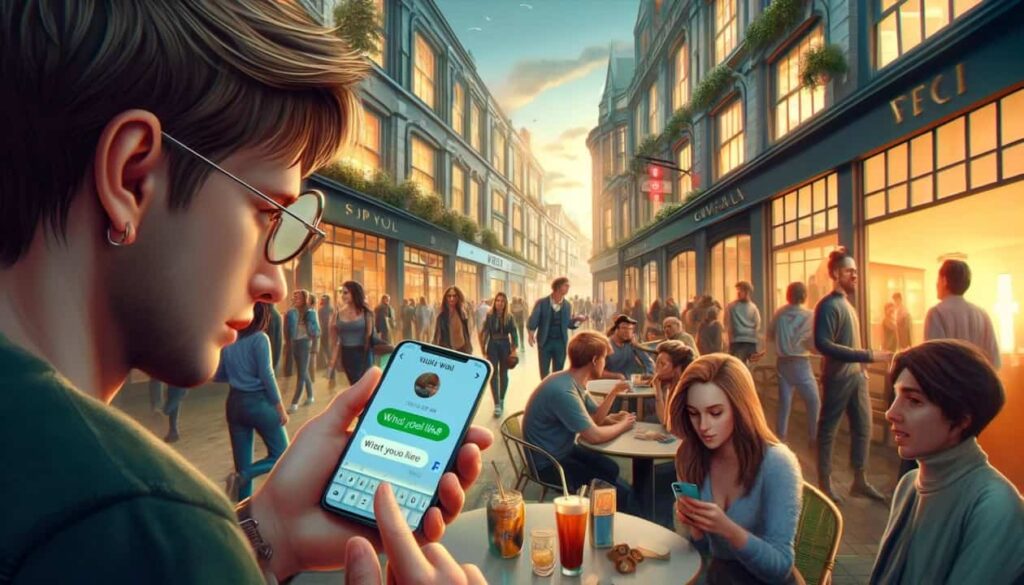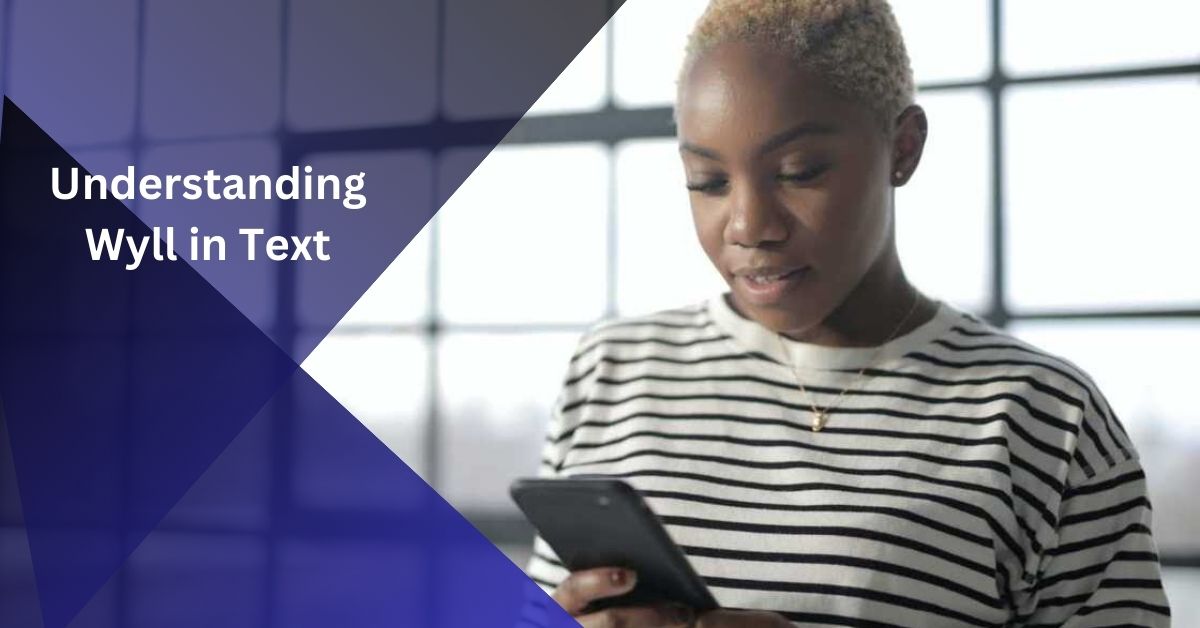When navigating the realm of digital communication, acronyms and shorthand have become integral to our daily interactions. One such acronym is “WYLL,” which stands for “What You Look Like?” Understanding the “wyll meaning in text” is crucial for effectively interpreting and responding to messages. This article will delve into the “wyll meaning in text,” its applications, and tips on using it appropriately.
What Does “Wyll” Mean in Text?
The “wyll meaning in text” is quite straightforward. “WYLL” stands for “What You Look Like?” This shorthand is often used in texting or online messaging, particularly with individuals you have not yet met in person.
The primary purpose of “WYLL” is to request a photograph from someone. When someone asks you “WYLL,” they are essentially asking for a visual representation of yourself.
Context and Usage of “WYLL”:
1. Online Messaging and Texting:
In the context of online messaging, the “wyll meaning in text” typically appears in casual conversations. If you’ve been chatting with someone and they suddenly ask “WYLL,” they are interested in seeing what you look like.
This request usually occurs after a period of getting to know each other through text, and it often signifies a desire to move the relationship forward or simply to satisfy curiosity.
2. Social Media Interactions:
On social media platforms, the “wyll meaning in text” can be used similarly. When engaging with someone on platforms like Instagram, Facebook, or Twitter, you might encounter “WYLL” if a user wants to see a profile picture or a more personal photo. This usage aligns with the informal and often spontaneous nature of social media interactions.
When to Use “WYLL”?

1. When You’ve Developed a Rapport?
The “wyll meaning in text” should be used thoughtfully. It’s best applied in conversations where you’ve already established a rapport with the other person.
Asking “WYLL” too early in a conversation, especially with someone you don’t know well, might come across as intrusive or overly forward. Ensure you have built some level of trust before making such requests.
2. In Response to a Shared Interest:
Another appropriate scenario for using “WYLL” is when there’s a shared interest or mutual topic of discussion. For example, if you’re discussing hobbies or interests and someone mentions they’re into a particular activity, asking “WYLL” can be a natural way to continue the conversation by requesting a photo related to that interest.
Alternatives to “WYLL”:
While “WYLL” is a convenient shorthand, there are other ways to ask for someone’s photo or to express interest in seeing what they look like. Alternatives include:
- “Can you send me a pic?”
- “I’d love to see what you look like!”
- “Do you have a photo you can share?”
These phrases can be used to request a photo without relying on acronyms, providing a more personalized touch to your request.
Common Misunderstandings:
1. Perceptions of Intrusiveness:
The “wyll meaning in text” can sometimes be misunderstood. If you’re not familiar with the person you’re texting, they might perceive the request for a photo as intrusive.
It’s essential to be mindful of the context and the nature of your relationship with the person before asking “WYLL.”
2. Privacy Concerns:
Another potential issue with the “wyll meaning in text” is related to privacy. Some individuals may be uncomfortable sharing photos due to privacy concerns.
Respecting their boundaries and understanding their comfort level is crucial in maintaining a positive and respectful communication environment.
Cultural Variations in Using “WYLL””
The “wyll meaning in text” may vary significantly across different cultures and regions. In some cultures, asking for a photo via “WYLL” might be a common and acceptable practice, reflecting a casual and open approach to online interactions.
In contrast, other cultures may view such requests as impolite or intrusive. For instance, in some Asian cultures, privacy is highly valued, and requests for personal photos might be seen as too forward or disrespectful.
Understanding these cultural nuances is essential for effective communication, especially when interacting with individuals from diverse backgrounds. Being sensitive to these differences can help you avoid misunderstandings and ensure that your interactions are respectful and considerate.
The Psychological Impact of Photo Requests:
When someone receives a “WYLL” message, the psychological impact can vary depending on their self-esteem and body image. For some individuals, receiving a request for a photo can be flattering and boost their confidence, as it may indicate that the other person is interested or engaged in the conversation.

However, for others, particularly those who may be self-conscious about their appearance, such a request can be stressful or uncomfortable. It’s important to be aware of these potential impacts and to approach the request with empathy.
Offering a choice or providing context for why you’re asking for a photo can help mitigate any negative feelings and make the request feel more respectful and considerate.
Etiquette for Asking “WYLL” in Professional Contexts:
While “WYLL” is predominantly used in casual and personal conversations, there may be instances where a similar request could be made in professional contexts, such as networking events or online professional forums.
However, the etiquette for requesting a photo in these situations differs significantly. In professional settings, it’s crucial to be more formal and respectful.
Instead of using acronyms like “WYLL,” it’s better to frame your request more professionally, such as “Could you please share a recent photo for our records?” This approach maintains professionalism and respects the boundaries of formal communication while still achieving the goal of obtaining a visual representation.
The Evolution of Acronyms and Their Impact on Communication:
The use of acronyms like “WYLL” reflects the broader trend of shorthand communication in the digital age. This evolution has been driven by the need for brevity and speed in texting and online messaging.
As language evolves with technology, acronyms and shorthand become integral to how we communicate, often simplifying complex messages into easily digestible snippets.
While this shift towards abbreviated communication enhances efficiency, it can also lead to potential misunderstandings, especially for those unfamiliar with the shorthand or its nuances.
Understanding the implications of these changes and how they affect interpersonal communication is crucial for navigating modern digital interactions effectively.
The Role of “WYLL” in Building Online Relationships:
The “wyll meaning in text” plays a significant role in the process of building online relationships. When individuals engage in conversations online, particularly through text or messaging apps, establishing a sense of connection and trust is essential. Asking “WYLL” can be a step toward deepening this connection by creating a more personal and humanizing interaction.
By requesting a photo, the asker demonstrates a genuine interest in the other person’s appearance, which can foster a sense of intimacy and strengthen the bond between individuals. However, this approach should be balanced with sensitivity to the other person’s comfort level, as some may not be ready to share personal photos early in the relationship.
Navigating Privacy and Security Concerns:
In the digital age, privacy and security are major concerns, particularly when sharing personal information online. The “wyll meaning in text” involves a request for a photo, which raises potential privacy and security issues.

Users should be cautious about the type of photo they share and who they share it with, as images can be easily misused or distributed without consent. It’s advisable to share photos only with trusted individuals and to avoid sharing sensitive or identifiable images that could compromise personal security.
Additionally, users should be aware of the potential for scams or fraudulent activities that exploit photo requests for deceptive purposes.
The Influence of “WYLL” on Social Media Trends:
The “wyll meaning in text” has influenced social media trends, reflecting broader patterns in online behavior. Platforms like Instagram, Snapchat, and TikTok often feature visual content as a primary form of engagement, making photo requests a common element of interactions.
The trend towards sharing photos and visual updates aligns with the increasing emphasis on visual communication in social media. This shift highlights how digital communication practices evolve in response to the platforms and technologies that facilitate them.
Understanding how “WYLL” fits into these trends can provide insights into broader patterns of social media engagement and the ways in which users seek to connect and present themselves online.
Addressing the Etiquette of Photo Sharing in Different Contexts:
The etiquette surrounding photo sharing, particularly in response to “WYLL,” can vary depending on the context of the conversation. In casual conversations with friends or acquaintances, sharing a photo may be seen as a natural and informal gesture.
However, in more formal or professional settings, the expectations around photo sharing are different. It’s important to consider the context and the nature of the relationship before responding to a “WYLL” request.
For example, in a professional context, it might be more appropriate to provide a LinkedIn profile picture or a professional headshot rather than a personal photo. Being mindful of the context helps ensure that the request and response align with social norms and expectations.
Conclusion:
The “wyll meaning in text” is a simple yet significant aspect of modern digital communication. By understanding the context and appropriate use of “WYLL,” you can enhance your online interactions and navigate conversations with greater ease. Remember to use “WYLL” thoughtfully and consider the comfort and privacy of the other person to ensure respectful and enjoyable exchanges.


